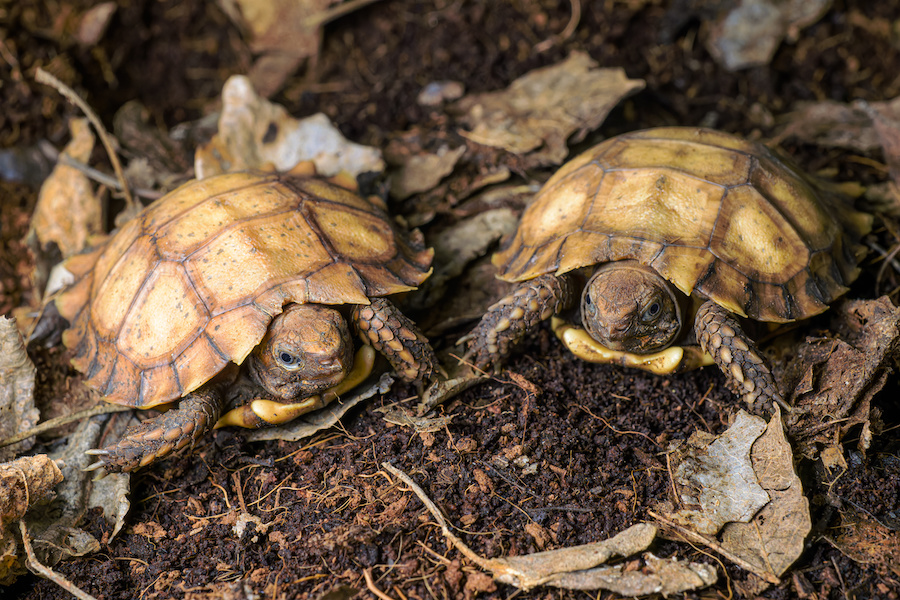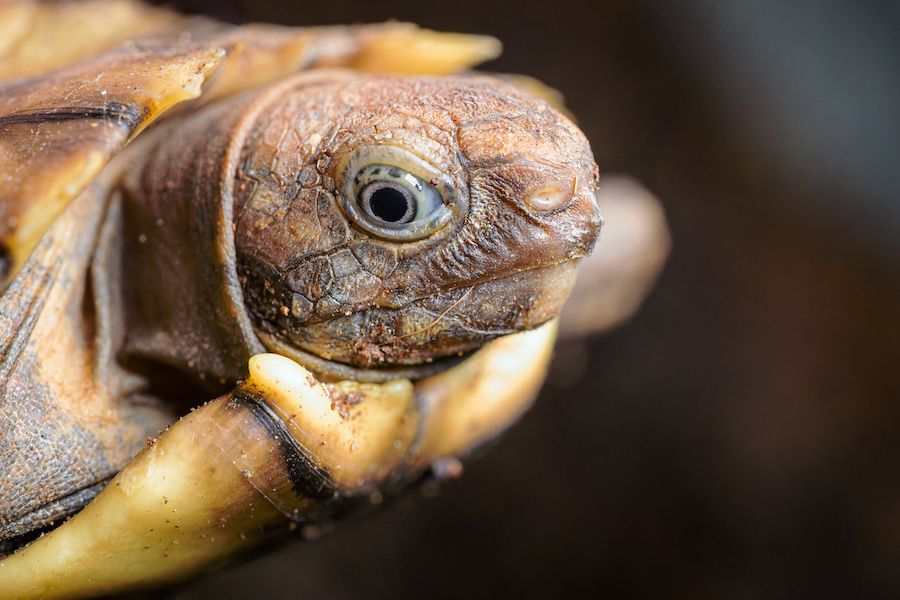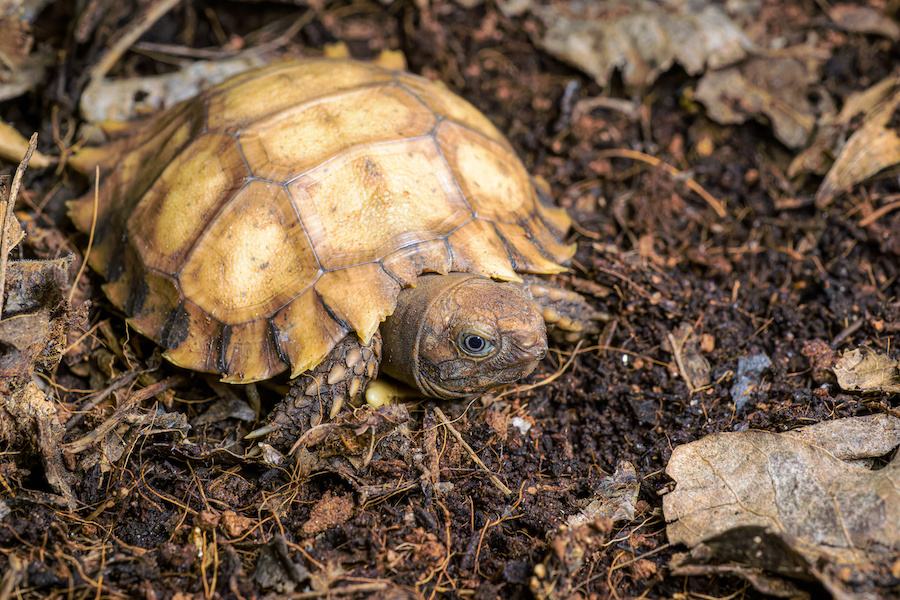
The first breeding of tile turtles in European zoos is the result of a fifteen-year effort by the team of curator Peter Velenský. As part of the breeding of reptiles at the Prague Zoo, this is a historic success on a world scale. Photo by Petr Hamerník, Prague Zoo
Exactly four months ago, two scaly turtle hatchlings hatched in the Prague Zoo. These mushroom-eating reptiles were bred by the Prague Zoo as the first zoo in Europe. Both delicate cubs thrive and transform significantly.
“They slowly lose their egg tooth and regularly eat oyster mushrooms, fruits such as figs or papaya and fresh dandelions. They gradually round out as their carapace becomes more arched. In short, they have a zest for life,” says curator of reptiles Petr Velenský. According to him, the key is that the turtles grow without deformities. “The supply of calcium is ensured by the cuttlefish bone, which they willingly nibble on. They got really hard for us. After hatching, they were unusually soft, almost like an inflatable balloon. Today, I would compare their hardness to a rugby cone,” he adds.

The egg tooth, i.e. the horn-shaped formation on the jaws, which enables small turtles to break the shell and hatch from the egg, is already only minimally visible on the head of the young. Photo by Petr Hamerník, Prague Zoo
For the time being, the cubs remain in the background to be disturbed as little as possible. Handling them is limited to the necessary minimum. Even so, curator Velenský’s team learns valuable information about the way of life of these little-explored animals. For example, they are especially active after the terrarium has been dewed. Presumably in the belief that the mushrooms that feed on this food-specialized species will grow.
According to the IUCN Red List, leatherback turtles are an endangered species, and even critically endangered in China. In addition to the loss of the natural environment, the cause is illegal trade on Asian markets. After all, the father of the cubs also got to Prague from the confiscated shipment of turtles via the Tai-pei Zoo. The current breeding at the Prague Zoo is therefore a life-long undertaking. The emerging methodology can help in breeding and other breeding institutions.
The reproduction of terrapins, whose adult individuals can be found by visitors in Velemlokário and which until recently were considered not only non-reproducible, but even unkillable, was preceded by a fifteen-year effort. The whole story is, among other things, colorfully described in the current issue of the Trojský kóník, the magazine of the Prague Zoo.

The extremely delicate hatchlings remain in the hinterland for the time being, where they live a very sedentary lifestyle. They only come out of their shelter to feed. Photo by Petr Hamerník, Prague Zoo

